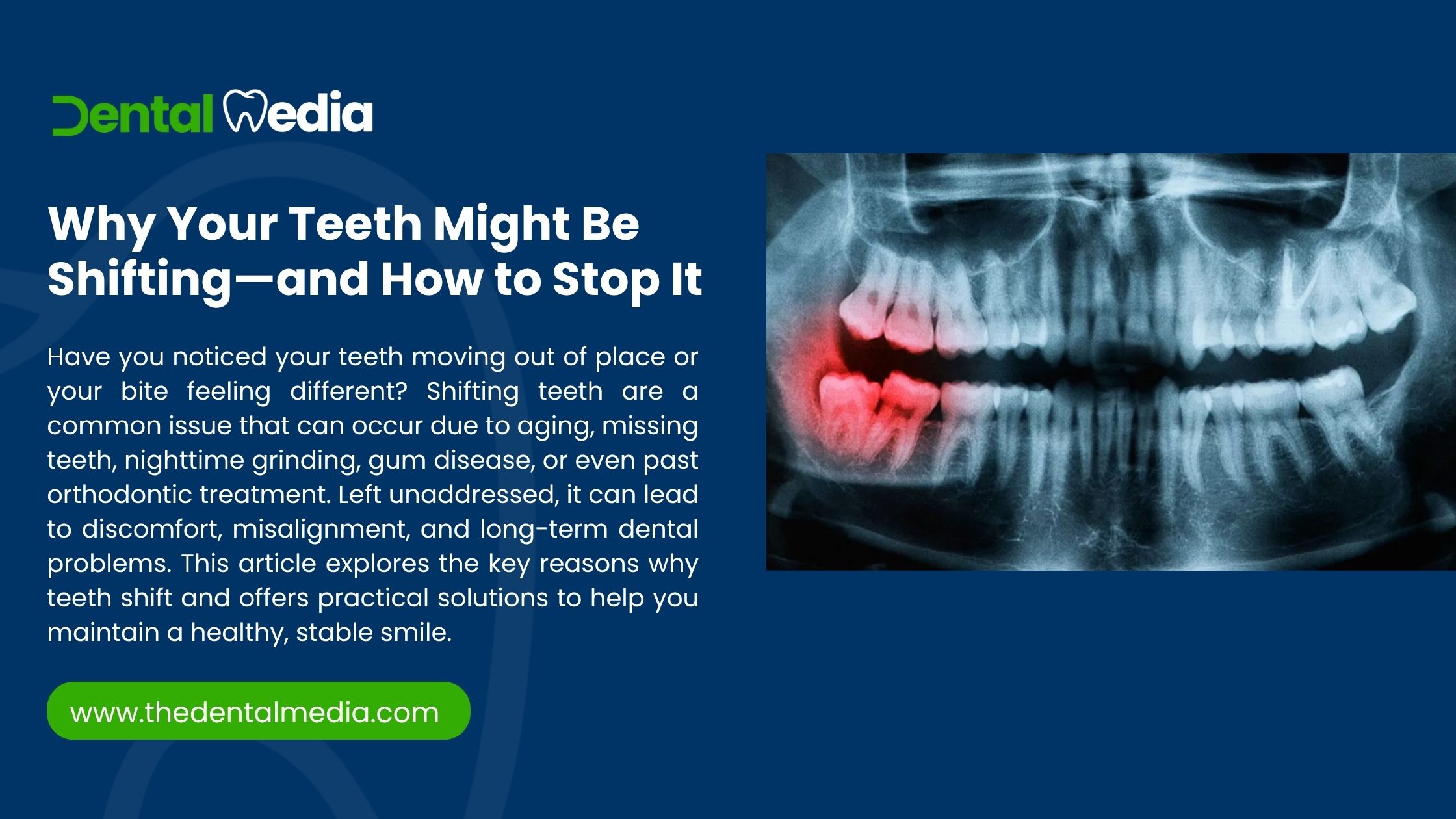Many people assume that once their teeth are straight—whether naturally or through orthodontic treatment—they’ll stay that way forever. Unfortunately, that’s not always the case. Teeth can and do shift over time, often without you even realizing it until you notice changes in your bite, gaps forming, or increased crowding. If left unaddressed, shifting teeth can lead to discomfort, difficulty cleaning, jaw pain, and even further dental issues.
In this article, we’ll explore the most common reasons why teeth shift, the signs to watch for, and how you can prevent or stop it from progressing.
Why Do Teeth Shift Over Time?
Natural Aging Process
As we age, our bodies change—including our teeth and jawbones. The lower jaw tends to move forward slightly, and bone density can decrease, especially in the jaw. This results in a natural movement of teeth, often causing crowding in the lower front teeth and slight misalignment.
Tooth Loss
When a tooth is lost and not replaced, the surrounding teeth often shift into the open space. The opposing tooth may also “super-erupt” into the gap. This movement disrupts the alignment of your bite and can lead to further shifting over time.
Not Wearing Retainers After Orthodontic Treatment
One of the most common causes of teeth shifting post-braces or aligners is not wearing your retainer. Teeth have a memory and a tendency to return to their original positions if they’re not properly held in place, especially within the first few years after treatment.
Gum Disease (Periodontitis)
Gum disease damages the supporting tissues and bone that hold your teeth in place. As the gums recede and bone weakens, teeth may become loose and start to drift. This often results in gaps between teeth or general shifting, particularly in adults.
Teeth Grinding and Jaw Clenching (Bruxism)
Chronic grinding or clenching puts excessive pressure on your teeth. Over time, this can wear them down and shift their positions. It can also cause headaches, jaw pain, and cracked teeth.
Wisdom Teeth Pressure
If your wisdom teeth don’t have enough space to emerge properly, they may push against the nearby teeth, causing crowding and shifting—especially in the back of the mouth. This is why wisdom teeth are often removed during young adulthood.
Changes in Oral Habits
Habits like tongue thrusting, nail-biting, pencil chewing, or even excessive use of straws can apply unnatural forces to the teeth and subtly change their alignment over time.
Signs Your Teeth Are Shifting
You might not notice tooth movement immediately, but here are some key signs to look out for:
- New gaps between teeth
- Overlapping or crowding of teeth
- Changes in bite alignment (e.g., your teeth no longer touch the same way)
- Increased difficulty flossing or brushing
- Loose or mobile teeth
- Jaw pain or discomfort
- Speech changes (due to spacing or positioning)
How to Stop or Prevent Teeth from Shifting
Wear Your Retainer Consistently
If you’ve had braces or clear aligners, wearing your retainer as instructed is crucial. For many, this means nightly wear for life. Retainers help “lock in” your new tooth position.
Tip: If your retainer no longer fits, see your orthodontist. A poorly fitting retainer can do more harm than good.
Replace Missing Teeth Promptly
If you’ve lost a tooth, don’t wait to replace it. Consider options like:
- Dental implants (permanent and stable)
- Bridges (fixed prosthetic anchored to nearby teeth)
- Partial dentures (removable replacements)
This prevents neighboring teeth from drifting into the gap.
Treat Gum Disease Early
Maintain strong gums and bone support with:
- Daily brushing and flossing
- Routine professional cleanings (every 6 months or more)
- Early intervention for gingivitis or periodontitis
If you notice signs like bleeding gums, bad breath, or gum recession, seek treatment right away.
Address Teeth Grinding and Clenching
A custom nightguard can protect your teeth from grinding damage. Stress management, physical therapy, or medication may also be necessary in severe cases.
Other tips:
- Avoid caffeine and alcohol before bed
- Practice jaw relaxation techniques
- Use mouthguards during contact sports
Monitor Wisdom Teeth Development
If you’re in your late teens or early twenties, have your dentist monitor your wisdom teeth via X-rays. If they’re impacted or misaligned, removal may be the best preventative option.
Maintain Regular Dental Checkups
Your dentist can catch early signs of shifting and intervene before it becomes a major issue. Regular cleanings also help prevent gum disease and plaque buildup that can lead to movement.
Correct Harmful Habits
Become aware of unconscious behaviors like biting nails, chewing pens, or excessive tongue pressure against the teeth. These actions, done repeatedly, can cause minor but cumulative shifts over time.
Treatment Options for Shifted Teeth
If your teeth have already shifted, you have several options:
- Clear Aligners (e.g., Invisalign) – Great for mild to moderate cases of shifting.
- Braces (Traditional or Ceramic) – More suitable for complex or severe realignments.
- Veneers or Bonding – Cosmetic fixes for minor alignment or spacing concerns.
- Retainers (Active) – Special retainers can make minor adjustments over time.
Consult with a dentist or orthodontist to determine the right approach for your situation.
For more help and support, feel free to contact us at TheDentalMedia.com.

